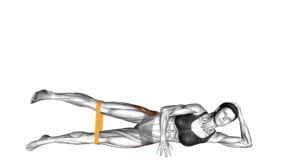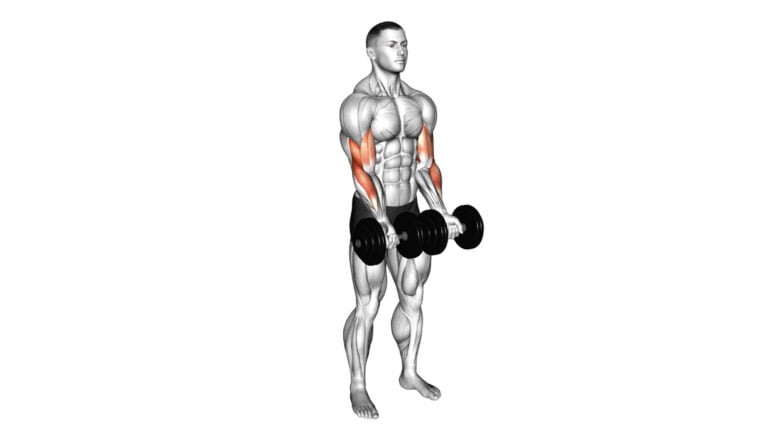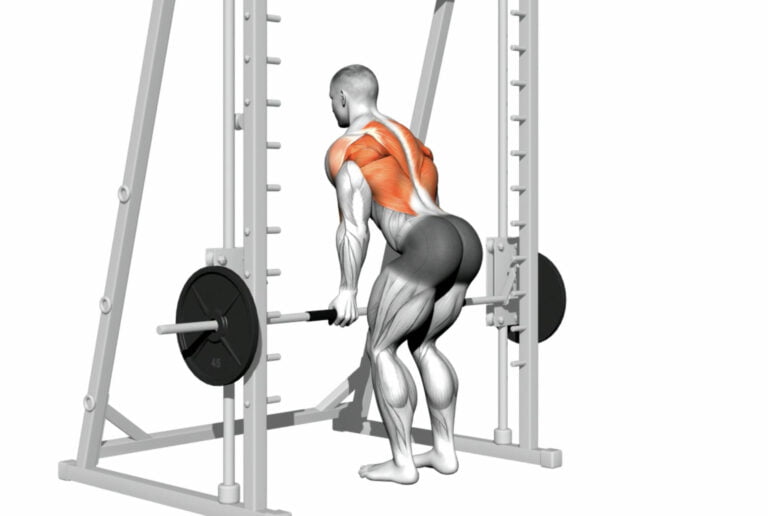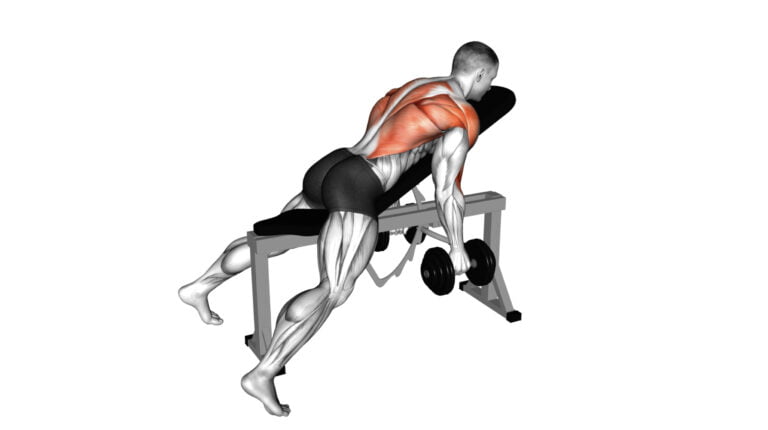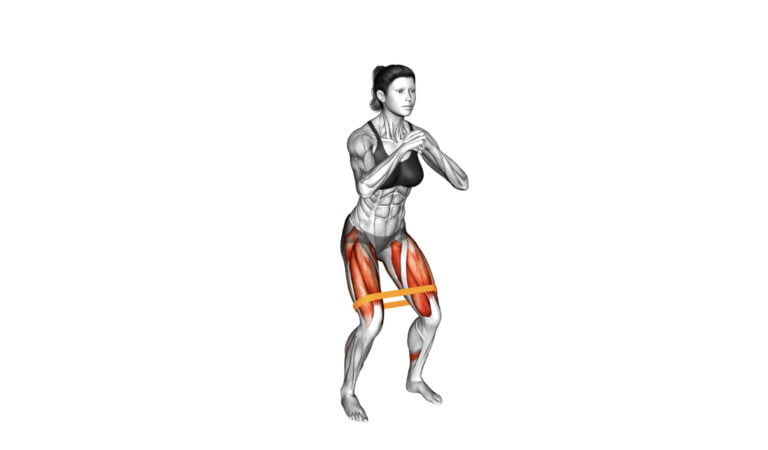10 Exercise Band Exercises For Seniors: A Comprehensive Guide To Strengthening And Flexibility
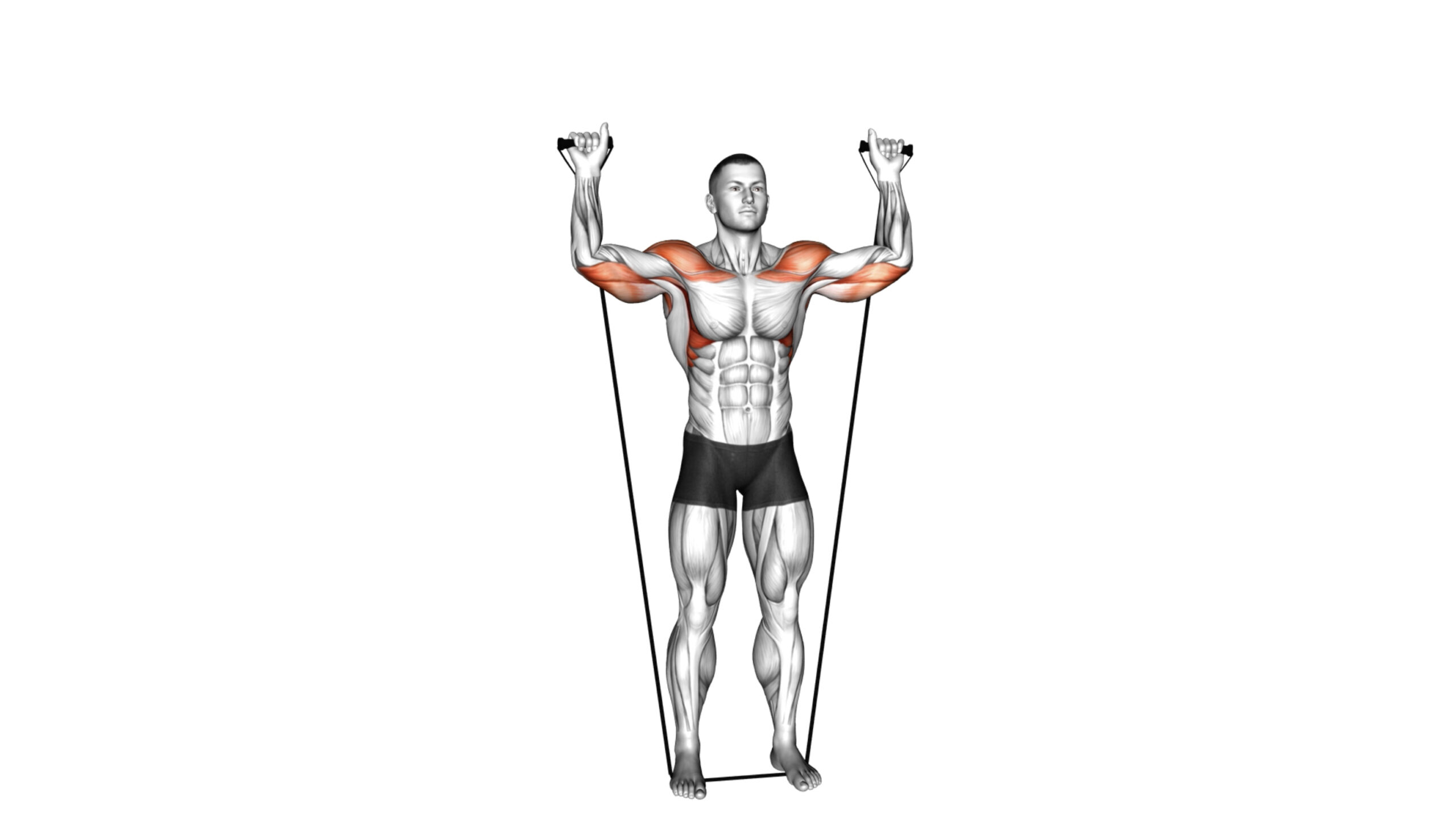
Many think that as we get older, getting stronger is out of reach. I’m here to tell you, with years of experience in fitness training and a special focus on older adults, that this couldn’t be further from the truth.
Exercise Band Exercises for Seniors are not just about maintaining muscle tone; they’re a key tool in unlocking a more active and independent life well into our golden years.
This article pulls back the curtain on how resistance band exercises can transform health by improving strength, flexibility, and overall physical well-being – without putting undue stress on joints.

The fact that resistance training can significantly reduce symptoms of arthritis should catch your attention if you’re looking to maintain an active lifestyle without pain. Get ready to strengthen your body with simple yet effective movements.
Key Takeaways
- Exercise bands offer a low – impact option for seniors to improve muscle strength, balance, and stability without putting too much stress on joints.
- Regular practice of resistance band exercises can restore lost muscle strength, enhance flexibility, improve functional fitness, and reduce the risk of falls by strengthening muscles involved in everyday activities.
- Resistance bands are versatile tools that allow seniors to perform a wide range of exercises targeting different muscle groups from various positions whether standing, seated, or lying down.
- Starting with 1-3 sets of 10-15 reps per exercise is recommended for beginners; as strength improves, increasing the number of sets and reps will help achieve better results.
- It’s important to consult with a healthcare provider before starting new exercise routines especially if there are existing health concerns or injuries. The right resistance level should be chosen to challenge muscles without compromising form or causing strain.
Benefits of Resistance Band Exercises for Seniors

Resistance band exercises for seniors improve muscle strength, balance, and stability. They also offer a low-impact way to restore muscle tone and functional fitness.
Low impact
Exercise band workouts offer a low impact option for seniors aiming to maintain or increase muscle strength without the harsh effects on joints and tendons that can come from high-impact activities like running or jumping.
This gentle approach helps reduce the risk of injury while still providing the resistance needed to challenge muscles, including those in the arms, legs, and core.
Using bands for strength exercises allows for controlled movements that focus on building muscle mass and improving balance with minimal stress on knees, hips, and lower back. Seniors can perform squats, bicep curls, and shoulder presses more safely, making these exercises an excellent choice for aging bodies looking to stay active without overexerting themselves.
Restores muscle strength and tone
As we age, muscle mass naturally decreases, leading to weaker muscles and reduced tone. Resistance band exercises provide an effective way to combat this trend. They target various muscle groups, from the biceps in your arms to the glute muscles in your butt.
This variety ensures a comprehensive workout that builds strength uniformly.
Using resistance bands for strength workouts engages both small and large muscle groups. The tension from the bands forces muscles to contract, similar to lifting weights but with less strain on joints.
Regular practice of these exercises gradually restores lost muscle strength and improves overall muscular tone, making daily activities easier and reducing the risk of falls.
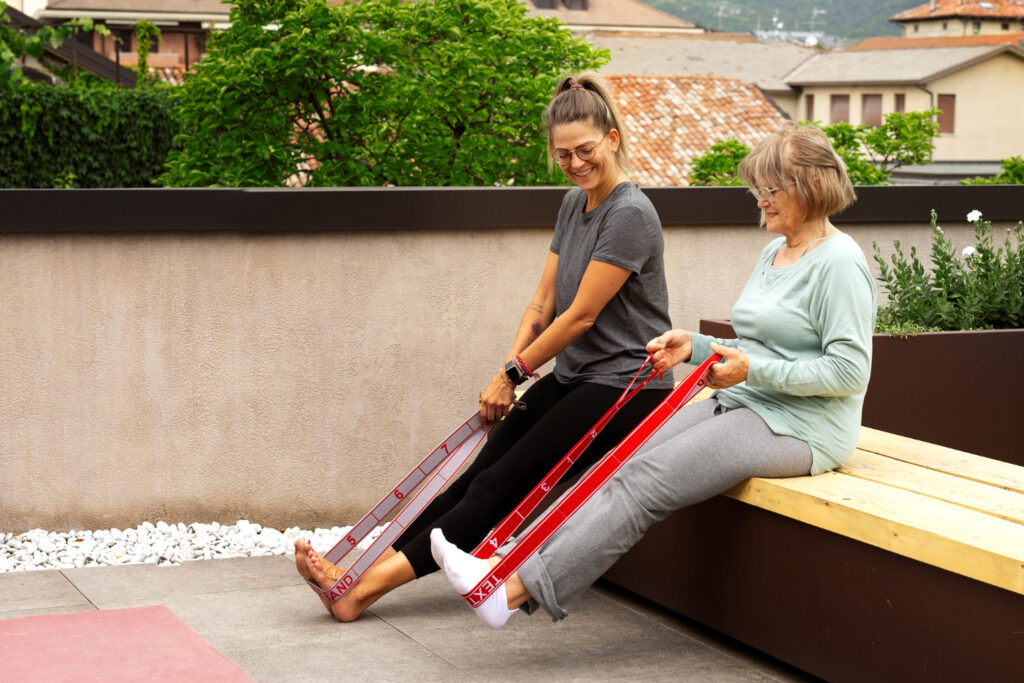
Improves functional fitness
Gaining muscle strength and tone sets the stage for enhancing functional fitness. This aspect is crucial because it directly impacts seniors’ ability to perform daily activities with ease.
Simple tasks like walking, climbing stairs, or even getting up from a chair become more manageable. Resistance band exercises build endurance in muscles that are vital for these everyday movements.
They help improve balance and stability, reducing the risk of falls.
Engaging in resistance exercises also promotes flexibility and joint health. This means seniors can enjoy a wider range of motion, making every movement smoother and less strenuous.
Regularly practicing these exercises assists in maintaining independence well into later years by keeping the body strong and agile enough to handle real-world physical demands.
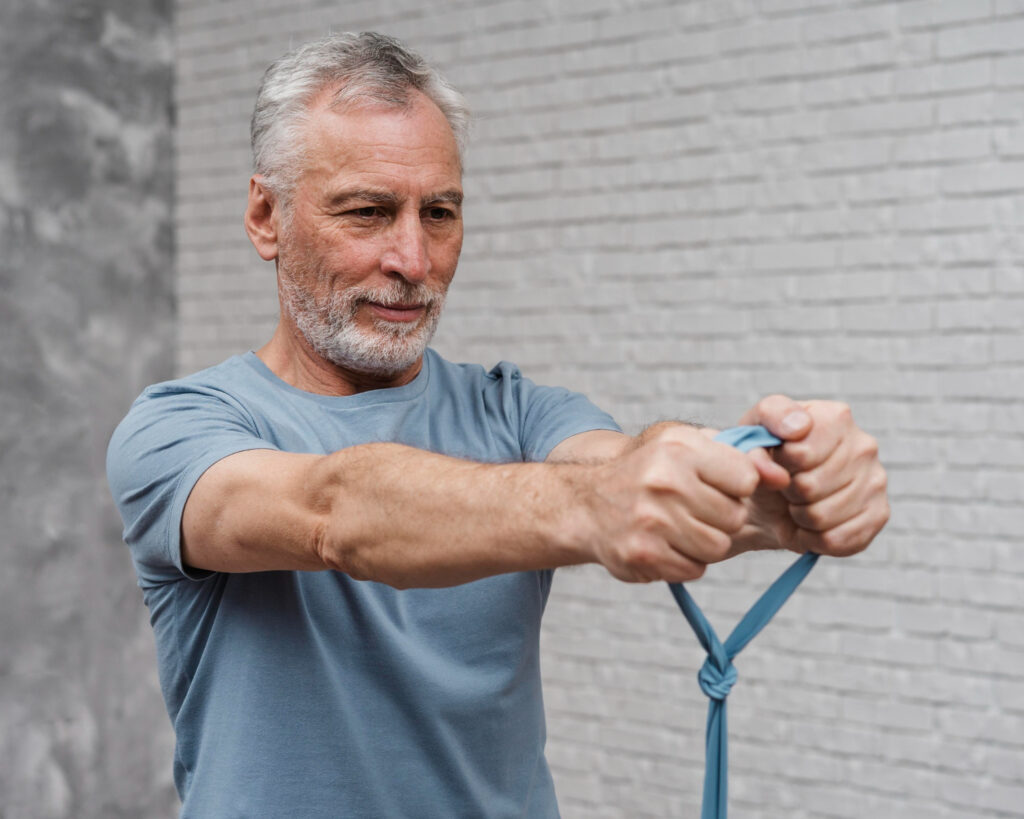
Versatility
Exercise bands are incredibly versatile and can be used to target various muscle groups throughout the body. They can easily be incorporated into different types of workouts, from strength training to cardio exercises.
The resistance level of the band can also be adjusted, allowing for a wide range of intensities suitable for all fitness levels. Additionally, exercise bands offer the flexibility to perform exercises in a standing, seated, or lying position, making them an ideal choice for senior citizens looking to improve their strength and flexibility.
With exercise bands, seniors have the ability to engage in a variety of movements such as shoulder presses, bicep curls, tricep extensions, and many more. This versatility provides options for individuals with joint pain or mobility issues as they can modify movements based on their comfort level and physical abilities while still reaping the health benefits of resistance training.
Balance and stability
Improve balance and stability with exercises like squats, calf raises, and hip abduction using resistance bands. Engaging multiple muscle groups simultaneously will help to enhance overall coordination and functional fitness for everyday activities.
By incorporating these exercises into your routine, you can strengthen the lower leg muscles, hips, and core for better balance and reduced risk of falls.
Work on maintaining proper form throughout the movements to ensure optimal results. Keep a neutral spine, engage your core, and focus on controlled movements during each exercise. This will help in improving posture as well as stability while performing daily tasks.
Precautions and Tips for Starting Resistance Band Exercises
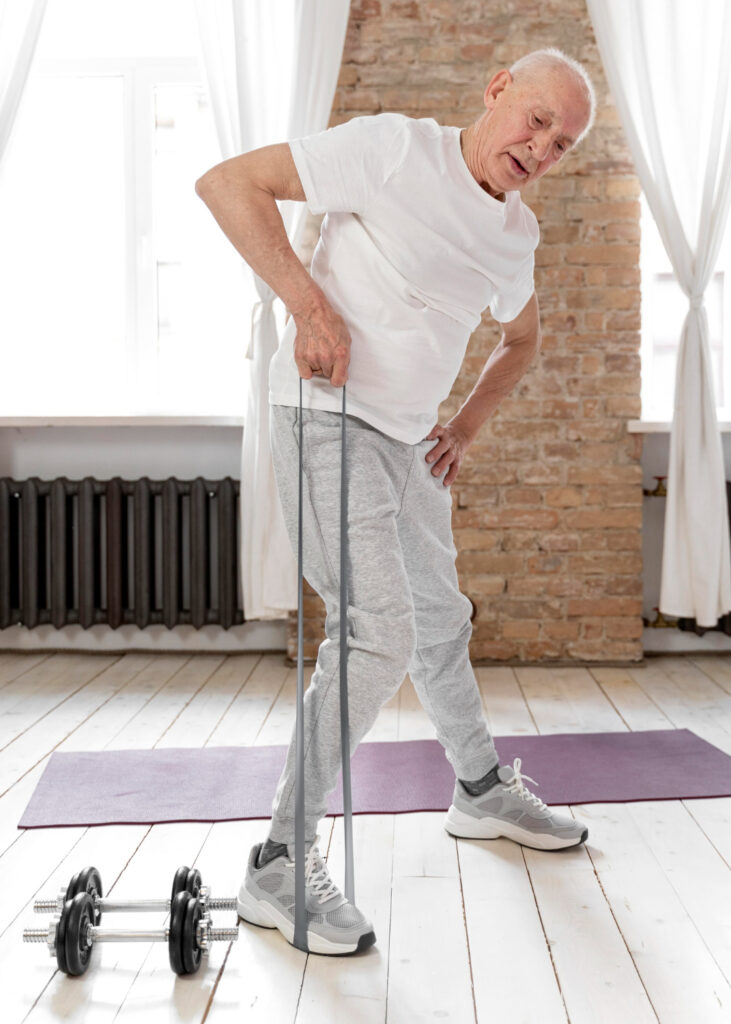
Before starting resistance band exercises for seniors, it’s important to consult with a healthcare provider to ensure the exercises are suitable. Warming up properly, choosing the right resistance level, and working around any injuries or pain are essential precautions and tips for starting exercise band exercises for seniors.
Consult with a healthcare provider
Before starting any new exercise routine, it’s essential to consult with a healthcare provider. This is especially important for seniors who may have underlying health conditions or physical limitations.
A healthcare provider can offer personalized advice and guidance based on an individual’s specific needs and medical history. It’s crucial to ensure that resistance band exercises are safe and suitable for your current health status before beginning the workout regimen.
In American English Language, Seek professional guidance before commencing new exercise activities, particularly if you have existing medical issues or age-related concerns.
Warm up properly
Before starting your resistance band exercises, prepare your body for the workout ahead by warming up. Begin with light cardio movements like marching in place or arm circles to increase blood flow and loosen up muscles.
You can also incorporate dynamic stretches such as leg swings and arm circles to enhance flexibility and prevent injury during the exercise routine. Remember to focus on large muscle groups that will be engaged during the resistance band training, including shoulders, hips, and legs.
Once you have completed your warm-up routine, take a moment to mentally prepare for your resistance band exercises. Set clear goals for your workout session and visualize yourself completing each exercise with proper form and control.
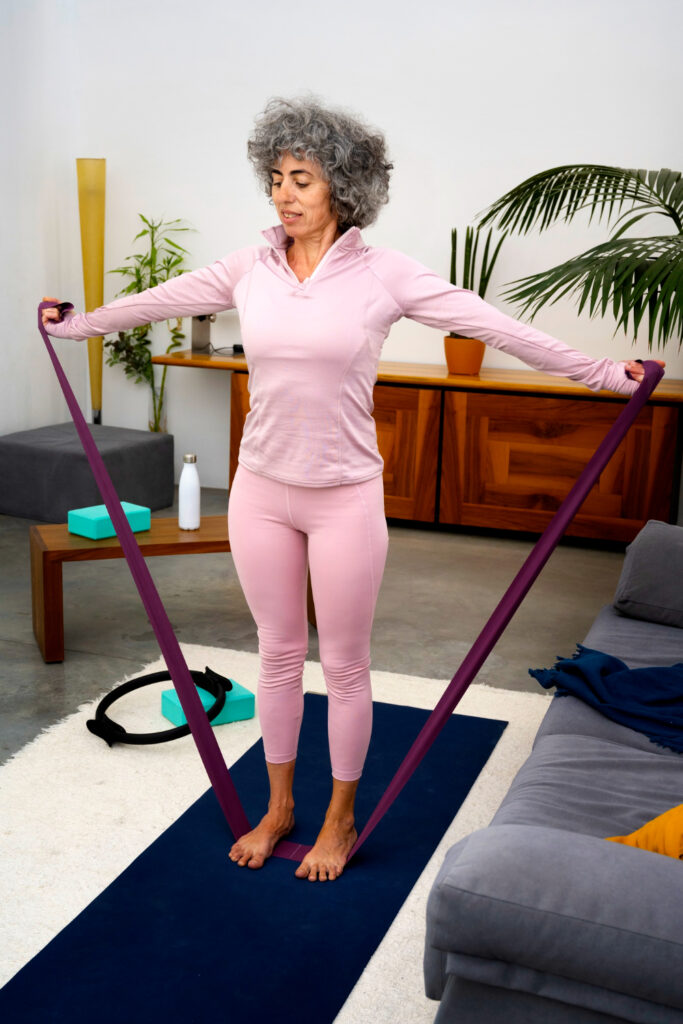
Choose the right resistance level
Transitioning from warming up to choosing the right resistance level is crucial in preventing injuries and getting the most out of your band exercises. When selecting a resistance band, consider your current strength and conditioning level.
It’s essential to choose a band that provides enough challenge without compromising proper form. Evaluate different bands by testing their resistance against various muscle groups to ensure they suit your fitness needs.
Adjust the resistance as necessary for each exercise during your workout session to optimize muscle engagement.
Work around injuries or pain
If you have any existing injuries or pain, it’s important to make adjustments when doing resistance band exercises. Listen to your body and avoid movements that cause discomfort or aggravate the injury.
Make use of softer resistance bands or adjust the range of motion and positioning to minimize strain on the affected area.
To prevent further injury, focus on maintaining good form throughout each exercise. If a certain movement exacerbates existing pain, consider modifying the exercise with alternative variations that target the same muscle groups without causing discomfort.
10 Exercise Band Exercises For Seniors
Lift the band over your head and return to the starting position. For more detailed instructions on these exercises, read our comprehensive guide on Exercise Band Exercises for Seniors.
1. Band Behind Neck Shoulder Press
Position the resistance band under your feet, shoulder-width apart. Grasp each end of the band and bring it behind your neck, crossing over your shoulders. Stand with a straight back and engage your core muscles.
Using an upward motion, press the band overhead until your arms are fully extended. Slowly lower the band back down to shoulder height and repeat for the recommended number of repetitions.
This exercise targets your shoulder muscles, helping to improve upper body strength and flexibility.
2. Band Bent over One Arm Kickback
Transitioning from the Band Behind Neck Shoulder Press, the Band Bent over One Arm Kickback targets the triceps muscles. Begin by standing with feet shoulder-width apart, holding one end of the resistance band in your right hand.
Bend at the hips to lean forward until your upper body is parallel to the ground. Keeping your elbow close to your side, extend your arm backward until it is straight, then return to starting position and repeat.
To perform this exercise effectively, ensure you maintain a strong core and steady balance throughout. Focus on controlled movements and avoid using momentum to swing the arm back.
3. Band Bent over Rear Lateral Raise
Transitioning from the one-arm kickback, seniors can try Band Bent over Rear Lateral Raise to strengthen their shoulder muscles. This exercise targets the deltoids and helps improve shoulder stability.
To begin, stand with feet hip-width apart on a resistance band. Hinge at the hips and bend slightly at the knees. Keep your back straight as you hold the band with both hands in front of your thighs or shins.
With elbows slightly bent, lift your arms out to the sides until they are parallel to the floor, then lower them back down in a controlled manner.
4. Band Biceps Curl
To perform a Band Biceps Curl, stand on the middle of the resistance band with your feet hip-width apart. Grasp each end of the band with an underhand grip and keep your elbows close to your sides.
Slowly curl your hands towards your shoulders, engaging your biceps as you lift. Lower back down in a controlled manner and repeat for desired reps.
Maintain proper form throughout by keeping your core engaged and avoiding any swinging motion from the hips or shoulders. This exercise effectively targets the biceps, helping to strengthen and tone these muscles for improved arm functionality in everyday activities.
5. Band Concentration Curl
The band concentration curl targets the biceps muscles, providing an effective way to strengthen and tone the arms. Sit on a chair or bench with your feet flat on the floor and hold one end of the resistance band under your foot.
Grasp the other end of the band with your working arm, positioning your elbow against your inner thigh. Curl your arm upward, bringing your hand towards your shoulder while keeping the rest of your body stationary.
Slowly lower back down and repeat for desired reps.
6. Band Deadlift
Perform the band deadlift by stepping on the resistance band with feet shoulder-width apart. Hold the handles firmly, hinge at your hips while maintaining a slight bend in your knees.
Stand back up, squeezing your glutes at the top to complete the movement.
Engage in band deadlifts to target and strengthen your hamstrings, lower back, and glutes. This exercise helps improve overall lower body strength and stability for daily activities.
7. Band front raise
Lift the resistance band in front of you with straight arms. Keep your feet shoulder-width apart and knees slightly bent. Slowly raise the band to shoulder height, then lower it back down.
Do 2-3 sets of 10-15 reps.
Engage your core to maintain stability as you perform this exercise. This move targets the shoulders, helping to build strength and stability in that area. Remember to focus on controlled movements for maximum benefit from this exercise.
8. Band Good Morning
Perform the band good morning by standing on the middle of the resistance band with your feet shoulder-width apart. Grasp both ends of the band and position them behind your neck, resting on your shoulders, to begin this exercise.
Keeping your back straight and knees slightly bent, hinge at your hips while maintaining a neutral spine until you feel a stretch in your hamstrings. Return to the starting position by contracting your glutes and hamstrings as you stand up.
Transitioning to – 9. Band Overhead Triceps Extension is another effective way to target different muscle groups for seniors looking to improve their strength and flexibility with an exercise band routine.
9. Band Overhead Triceps Extension
Transitioning from the Band Good Morning, seniors can also benefit from the Band Overhead Triceps Extension exercise. This exercise targets the triceps, which are important for pushing movements and maintaining arm function.
Using a resistance band, stand with your feet shoulder-width apart and grasp the band’s handles with both hands. Lift your arms overhead and keep your elbows close to your ears as you extend your arms fully.
Slowly return to the starting position and repeat this movement for a set number of reps to strengthen and tone your triceps.
10. Band Pull Apart
Transitioning from the Band Overhead Triceps Extension, the Band Pull Apart is an effective exercise to strengthen the muscles in your upper back and shoulders. Start by holding the exercise band with both hands in front of you at shoulder level.
Then, pull the band apart, squeezing your shoulder blades together as you do so. Slowly return to the starting position and repeat for multiple reps to improve posture and upper body strength.
When performing Band Pull Aparts, focus on maintaining a slight bend in your elbows throughout the movement to reduce strain on your joints. This exercise targets the muscles between your shoulder blades and can help alleviate tension caused by poor posture or long periods of sitting.
Recommended Sets And Reps
For seniors looking to benefit from resistance band exercises, it’s essential to start with 1-3 sets of 10-15 reps for each exercise. Gradually increasing the number of sets and reps as strength and endurance improve will help in achieving optimal results.
Select a resistance level that allows completing the desired sets and reps with some challenge but without compromising proper form. Vary the number of sets and reps based on individual needs, ensuring that there is enough resistance to elicit muscle strengthening without causing strain or fatigue.
As seniors progress in their exercise routines, they can consider increasing the resistance levels gradually to continue challenging their muscles effectively. It is important to listen to one’s body and adjust accordingly if any discomfort or pain arises during these exercises, indicating a need for modifications or lower resistance levels.
Conclusion
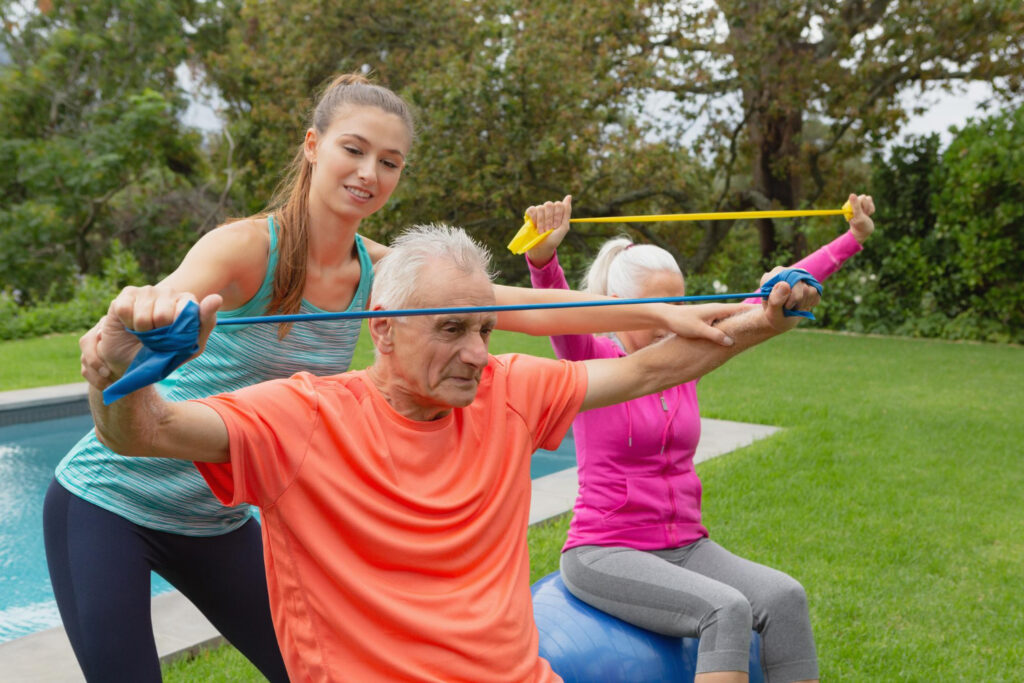
Achieve greater strength and flexibility with resistance band exercises for seniors. Implement these practical and efficient exercises to restore muscle tone and improve functional fitness.
How can you incorporate these strategies into your daily routine? Consider the impact of these exercises on enhancing overall well-being. Take a step towards a healthier lifestyle today!
FAQs
1. Can exercise bands help seniors build muscle?
Yes, exercise bands can help seniors prevent muscle loss and even gain some muscle mass by providing resistance during exercises.
2. Are there specific exercises for seniors using exercise bands to improve flexibility?
Absolutely! Fitness trainers recommend various stretch and strength exercises with exercise bands that enhance flexibility, from gentle squats to paddle-like movements.
3. Do I need free weights if I have an exercise band?
Not necessarily. Exercise bands, made of rubber, offer enough resistance for both strengthening and flexibility workouts without the need for free weights.
4. How do seniors maintain a safe squat position when using exercise bands?
Seniors should focus on keeping their belly tight while gently lowering into a squat to ensure safety and effectiveness when exercising with bands.

Author
Years ago, the spark of my life’s passion ignited in my mind the moment I stepped into the local gym for the first time. The inaugural bead of perspiration, the initial endeavor, the very first surge of endorphins, and a sense of pride that washed over me post-workout marked the beginning of my deep-seated interest in strength sports, fitness, and sports nutrition. This very curiosity blossomed rapidly into a profound fascination, propelling me to earn a Master’s degree in Physical Education from the Academy of Physical Education in Krakow, followed by a Sports Manager diploma from the Jagiellonian University. My journey of growth led me to gain more specialized qualifications, such as being a certified personal trainer with a focus on sports dietetics, a lifeguard, and an instructor for wellness and corrective gymnastics. Theoretical knowledge paired seamlessly with practical experience, reinforcing my belief that the transformation of individuals under my guidance was also a reflection of my personal growth. This belief holds true even today. Each day, I strive to push the boundaries and explore new realms. These realms gently elevate me to greater heights. The unique combination of passion for my field and the continuous quest for growth fuels my drive to break new ground.



